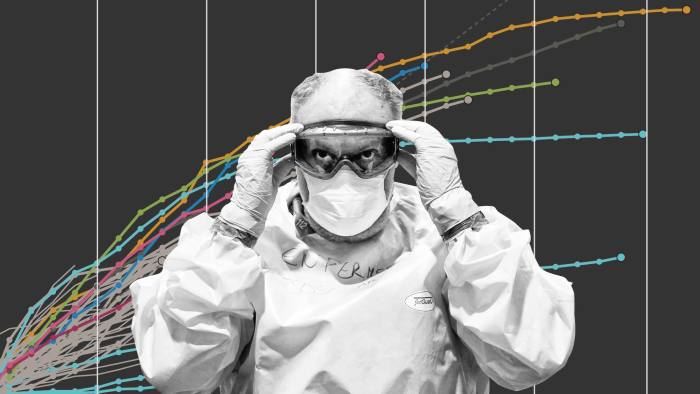China turns to steel to galvanise post-Covid economy
The coronavirus pandemic is putting China on course to dominate global steel production to an even greater extent than before, accelerating a trend that has gathered pace for more than half a century.
In April, a locked-down UK produced less than half of 1 per cent of the world’s steel, according to estimates from the World Steel Association. China, on the other hand, produced 62 per cent — dwarfing every other country combined, and significantly above its 54 per cent share a year earlier.
The country has long coveted the status of top producer. In the late 1950s, at the launch of China’s Great Leap Forward, Chairman Mao pledged to overtake Britain in steel and other industrial production within 15 years, and by 1996 it had pulled clear of the rest of the pack. But this recent surge is a sign of Beijing’s determination to fend off the impact of global economic weakness.
“The key point is again the desynchronisation between China and the rest of the world,” said Erik Sardain, a consultant at Roskill, a research firm. “This is what happened in 2009, and [it] is again going to happen this time.”
While steel mills fell quieter in Europe, the US and India, Chinese producers kept running through its Covid crisis and are producing at an even faster rate than they did last year, according to the WSA’s preliminary data. Goldman Sachs reckons China’s crude steel production in May hit its highest level since September 2019.
Production of the metal is an important indicator for an otherwise opaque set of government policies, which draw on an array of state-controlled or state-influenced sectors to lift output. During the global financial crisis China’s share of global steel production also rose sharply — to 47 per cent in 2009, from 38 per cent a year earlier, according to Capital Economics.
China’s economy shrank almost 7 per cent in the first quarter, its first year-on-year decline since 1976, prompting Beijing last month to confirm plans to boost spending on infrastructure through an increase in local government borrowing.
Gloria Lu, an analyst at S&P Ratings, noted that most of the Rmb3.75tn ($531bn) in local government special bonds — an increased quota unveiled at the National People’s Congress in late May — is expected to be spent on infrastructure.

While it remains unclear which projects will be prioritised, Ms Lu pointed to renovation of residential areas and 5G infrastructure, as well as potential hydraulic and regional railway investment. The government had already unveiled significant expenditure for transport in December last year, including Rmb800bn on railways.
The surge in Chinese steel production has been a boon for Australian miners BHP, Fortescue Metals Group and Rio Tinto — key suppliers of iron ore, the key ingredient. Shares in all three have rallied at least 50 per cent since March.
As mills have scrambled for supplies the price of iron ore has surged 20 per cent over the past month to above $105 a tonne. Inventories of the steelmaking commodity at major Chinese ports have steadily fallen this year to their lowest levels since 2016, implying high demand from mainland producers.
Global crude steel output outside China, meanwhile, was down 7 per cent month on month in April, according to Goldman. India slid almost two-thirds while Japan dropped a fifth and Europe weakened 11 per cent.
Editor’s note

The Financial Times is making key coronavirus coverage free to read to help everyone stay informed. Find the latest here.
James Campbell, principal analyst at CRU, a consultancy, estimates that more than a quarter of crude steel production capacity across Europe and North America is currently idled.
“China is on the road to recovery,” he said. “The rest of the world is where there is a problem. The lockdown happened later and demand is poor.”
Dr Campbell said not all of Europe’s shuttered capacity would restart this year, given the likelihood of continued weak demand. That could trigger a “new wave of restructuring” in the European steel industry, where profitability has been lower than other regions for a number of years.
China’s dominance of steel is not uncontested. In 2010 its share of production dipped after economic activity rebounded elsewhere. But if coronavirus and its economic effects push some struggling western producers over the edge, the country could pull further away.
That would come at a time of frayed relations with other countries, including the US, that are eyeing infrastructure projects of their own.
Even if the metal becomes a point of friction, China’s steel is likely to find buyers beyond its borders, especially as Beijing seeks to expand its overseas investment through its so-called Belt and Road Initiative.
“China is going to find other markets,” said Mr Sardain of Roskill. “Just look at Africa.”
Additional reporting by Sun Yu in Beijing
